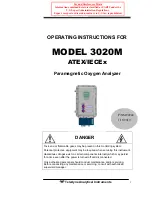
ARES-G2 Getting Started Guide
Page 68
As a practical guideline, measured sample strain should be at least 10% the commanded strain.
Although measurements can be taken below these limits, you are cautioned that accuracy may be affected.
Measurements that are affected by transducer compliance report modulus values that are lower than the
true modulus. One method of determining if transducer compliance is affecting the data is to switch to a
different geometry and compare the results to the first tests. If the data are unaffected by compliance, the
results from the two geometries should be nearly identical.
Sample compliance, or stiffness, is related to both the modulus and geometry of the sample. Since the
modulus is fixed, the sample dimensions are normally adjusted (to make the sample less stiff), or the
geometry is changed altogether, to obtain the desired sample compliance. It is critical that the sample com-
pliance is within the operational range of the instrument otherwise inconsistent or incorrect results will be
obtained.
NOTE: If the compliance effects on the sample are too large, you need to make the sample less stiff by
either increasing the sample gap or length or decreasing the sample cross section area.
Determination of Operational Range
Operating range is defined as the region bounded by the maximum and minimum complex modulus, G*,
that can be measured by the transducer using a specific geometry.
For each geometry there are specific factors that will affect the operating range for that geometry. Addi-
tionally, the following instrument-specific factors affect the operating range of all geometries:
•
Minimum torque that can be measured by the transducer
•
Transducer compliance
•
Maximum strain that can be generated by the motor
When the sample stiffness is comparable with the geometry's stiffness, the geometry compliance correction
should be considered. The geometry compliance correction is done through the TRIOS software by enter-
ing the geometry’s compliance values in the geometry setup.
Note
: See Configuring a New Geometry for more information.
Basic Instructions for Geometry Installation
The following instructions provide some general information for installing a geometry on the ARES-G2.
Refer to the online help for further information.
The following general sample loading guidelines pertain to all geometries:
•
Make sure the geometries are clean and free from damage.
•
Install the geometries correctly, as described. In general they should be easy to install. Having to use
undue force is a sign that something is wrong. Stop and ascertain the problem before continuing.
WARNING: The operator of this instrument is advised that if the equipment is
used in a manner not specified in this manual, the protection provided by the
equipment may be impaired.
AVERTISSEMENT: L'utilisateur de cet instrument est prévenu qu'en cas d'utilisa-
tion contraire aux indications du manuel, la protection offerte par l'équipement
peut être altérée.
















































